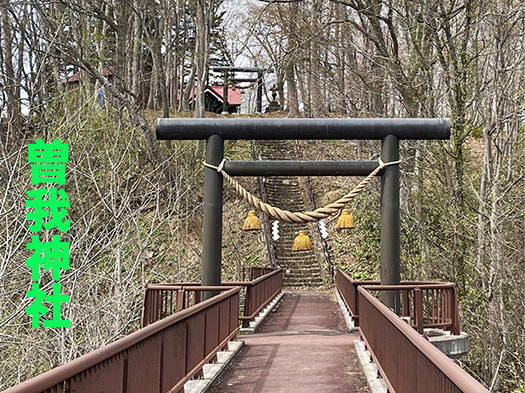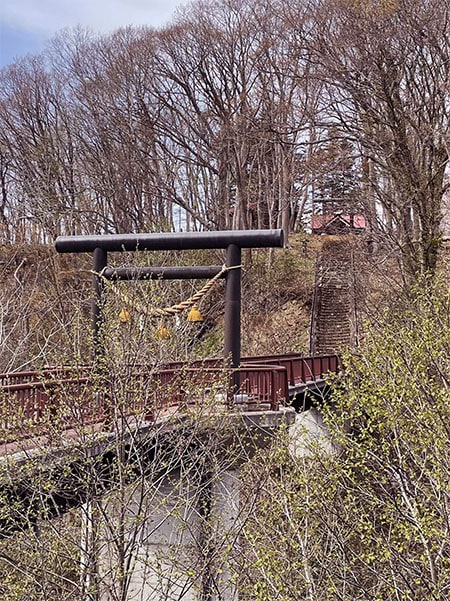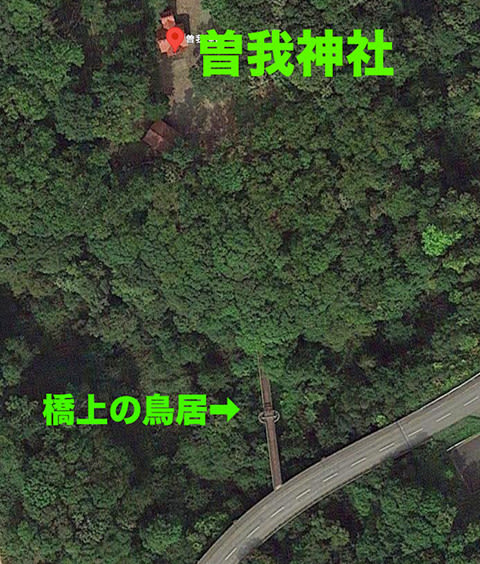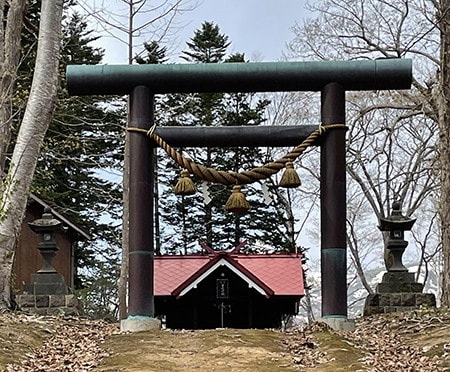



世界的な高級スキーリゾート地域として発展するニセコ地区。基本的には羊蹄山麓の農業地域ということで移動交通はクルマ利用。で、あちこちと移動していて尻別川にそそぐ支流がもたらす渓谷地形に高架道が設けられていて、そこを通りかかったら、脇に「参道」と鳥居が見えた。
「え、こんなところに?高架道から神社詣りなの?」というナゾの風景。で、地図をチェックしたら「そがじんじゃ」という神社があるとカミさんの報告。「え、蘇我神社?」って理解してしまった。蘇我神社は千葉県にある神社で、後方羊蹄とか、阿倍比羅夫とかの動乱の時代に日本史を彩る蘇我氏の末裔痕跡。
その蘇我神社があるのならば、符合すると考えられるということ急遽Uターンして参道を拝観し、本殿も参拝させてもらうことにしました。「もし蘇我神社ならば、後方羊蹄という日本書紀記述との歴史時代背景がシンクロしはじめるのではないか,ワクワク」

なんですが、よく神社名を確認したらヨミは「そがじんじゃ」だけれど、蘇我ではなく曽我という地名の神社と言うことがわかった。この一帯ではパワースポットとして知られている。調べてみたけれど、由緒はあんまり確定できない。明治以降に入植して成功した「曽我」という人物が建立したようです。1901年(明治34年) 曽我子爵がこの地の開拓を始める。1904年(明治37年) 創建。ということで周辺一帯に「曽我」という地名。
祭神 天照皇大神 八幡大神
1901年(明治34年)曾我子爵が開拓した曽我地域
1958年(昭和33年)神社創建。
で、どうしてパワースポットになっているのかは不明。たぶん橋の上を渡っていく非日常感が話題になっているのでしょうか。つい最近の創建と言うことなので、場所柄からのイメージと思われます。
しかし、日本というのは全国に八百万のように神社仏閣が存在し人びとがそうしたものに畏敬する文化を持っている。そういう社会性がひとびとの心性にいつしか染み込んで行っている部分がある。欧米のように一神教社会ではないけれど、それでもおだやかな社会的調和性が特徴になる社会。また歴史のヒントが無数にタイムカプセル化しているとも言える。この神社のように、高々つい最近、昭和時代の創建なのに大事にする社会。ホッコリとしたこういう文化は大切だと思う。
English version⬇
[Elevated road to bridge approach & torii, Niseko "Soga Shrine"].
I was excited to visit this shrine, mistaking it for the Soga Shrine, but unfortunately, it was not. I was excited to visit the shrine, mistaking it for Soga Shrine, but was disappointed (laugh). I was so excited to visit the shrine, but I was disappointed.
The Niseko area has developed into a world-class luxury ski resort area. Basically, it is an agricultural area at the foot of Mt. Yotei, so transportation is by car. As I passed by an elevated road in a valley formed by a tributary of the Shiribetsu River, I saw an "approach road" and a torii gate on the side.
What? Are you going to pay a visit to a shrine from an elevated road? It was a riddle scenery. I checked the map and found a shrine called "Soga Shrine," my wife reported. I understood. I understood. Soga Shrine is located in Chiba Prefecture and is a trace of the descendants of the Soga clan that colored Japanese history during the period of upheavals such as the backward Yotei and the Abenohirau.
I made a hasty U-turn to visit the approach to the shrine and the main shrine. If it is the Soga Shrine, the historical background of the backward Yotei in the Nihonshoki Chronicles will begin to synchronize, which is very exciting.
However, when I carefully checked the name of the shrine, I found that it is not Soga but a shrine in the name of a place called Soga, although the yomi is "Soga-jinja". It is known as a power spot in this area. I looked up the name of the shrine, but its history is not very definite. It seems that the shrine was built by a successful settler named "Soga" after the Meiji era (1868-1912), Viscount Soga started to settle the area in 1901 (Meiji 34), and the shrine was built in 1904 (Meiji 37). The whole surrounding area is therefore named "Soga".
Gods of worship Amaterasu-O-no-Mikoto Hachiman-O-no-Mikoto
1901 (Meiji 34) Soga area developed by Viscount Soga.
The shrine was founded in 1958.
So, why it is a power spot is unknown. Perhaps the unusual feeling of crossing over a bridge is the topic of conversation? Since the shrine was founded only recently, it is thought to be an image from the location.
However, in Japan, there are as many as 8 million Shinto shrines and Buddhist temples throughout the country, and people have a culture of reverence for such things. This social nature has somehow become ingrained in people's mentality. Although it is not a monotheistic society like in the West, it is still characterized by a gentle social harmony. It can also be said that there are countless time capsules of hints of history. Like this shrine, it was built only recently, in the Showa period, and yet it is still cherished by the society. I think it is important to have a culture like this, where people can feel relaxed.



















